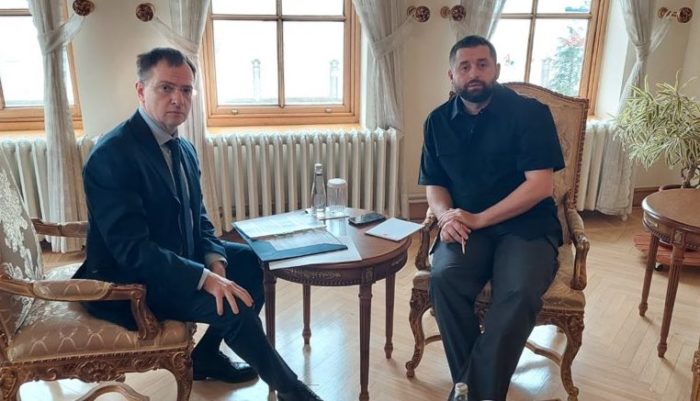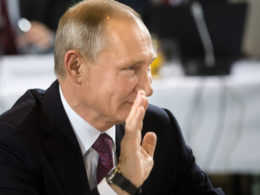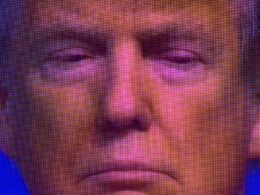The 10-point Ukrainian Plan
According to the media, the Ukrainian plan which is not independently verified, but is aligned with the statements from the negotiations, consists of the following ten points:
- Ukraine proclaims itself a neutral state, promising to remain nonaligned with any blocs and refrain from developing nuclear weapons — in exchange for international legal guarantees. Possible guarantor states include Russia, Great Britain, China, the United States, France, Türkiye, Germany, Canada, Italy, Poland, and Israel, and other states would also be welcome to join the treaty.
- These international security guarantees for Ukraine would not extend to Crimea, Sevastopol, or certain areas of the Donbas. The parties to the agreement would need to define the boundaries of these regions or agree that each party understands these boundaries differently.
- Ukraine vows not to join any military coalitions or host any foreign military bases or troop contingents. Any international military exercises would be possible only with the consent of the guarantor-states. For their part, these guarantors confirm their intention to promote Ukraine’s membership in the European Union.
- Ukraine and the guarantor-states agree that (in the event of aggression, any armed attack against Ukraine, or any military operation against Ukraine) each of the guarantor-states, after urgent and immediate mutual consultations (which must be held within three days) on the exercise of the right to individual or collective self-defence (as recognized by Article 51 of the UN Charter) will provide (in response to and based on an official appeal by Ukraine) assistance to Ukraine, as a permanently neutral state under attack. This aid will be facilitated through the immediate implementation of such individual or joint actions as may be necessary, including the closure of Ukraine’s airspace, the provision of necessary weapons, the use of armed force to restore and then maintain Ukraine’s security as a permanently neutral state.
- Any such armed attack (any military operation at all) and all measures taken as a result will be reported immediately to the UN Security Council. Such measures will cease when the UNSC takes the measures needed to restore and maintain international peace and security.
- Implementing protection against possible provocations, the agreement will regulate the mechanism for fulfilling Ukraine’s security guarantees based on the results of consultations between Ukraine and the guarantor-states.
- The treaty provisionally applies from the date it is signed by Ukraine and all or most guarantor-states. The treaty enters force after (1) Ukraine’s permanently neutral status is approved in a nationwide referendum, (2) the introduction of the appropriate amendments in Ukraine’s Constitution, and (3) ratification in the parliaments of Ukraine and the guarantor-states.
- The parties desire to resolve issues related to Crimea and Sevastopol shall be committed to bilateral negotiations between Ukraine and Russia for a period of 15 years. Ukraine and Russia also pledge not to resolve these issues by military means and to continue diplomatic resolution efforts.
- The parties shall continue consultations (with the involvement of other guarantor-states) to prepare and agree on the provisions of a Treaty on Security Guarantees for Ukraine, ceasefire modalities, the withdrawal of troops and other paramilitary formations, and the opening and ensuring of safe-functioning humanitarian corridors on an ongoing basis, as well as the exchange of dead bodies and the release of prisoners of war and interned civilians.
- The parties consider it possible to hold a meeting between the presidents of Ukraine and Russia for the purpose of signing a treaty and/or adopting political decisions regarding other remaining unresolved issues.
- Consequences and what to do?
Unconditional security guarantees for Ukraine, ceasefire, effective decisions on humanitarian corridors and humanitarian convoys, observance by the parties of the rules and customs of war. Difficult negotiations for peace in our country. Istanbul round right now… pic.twitter.com/SUTAQrAhA2
— Михайло Подоляк (@Podolyak_M) March 29, 2022
Questions regarding the plan
If the 10-point plan is indeed the actual proposals put forward by the Ukrainian delegation, it both offers a small hope for a peaceful resolution of the conflict, while also raising many questions.
Firstly, the Ukrainian proposal does offer Russia some “victories” and a way out without losing face.
It will be able to claim to have achieved its declared objectives.
- Ukraine will be neutral.
- Its armed forces (with Russian eyes) have been “reduced in size and do “no longer threaten Russia or LNR/DNR (Luhansk and Donetsk “People’s Republics”)” (according to Russian disinformation it has already averted a Ukrainian assault on the two so-called “republics”).
- Ukraine agrees to not host foreign military bases in its territory.
- The demand for a Ukrainian recognition of Crimea as Russian and the two puppet states in the Donbas as independent is still “in process” and not rejected.
- The demand for the protection of the Russian language has received a positive response (based on the principle of reciprocity from the Russian side obviously).
- The so-called demand for “de-Nazification” was always Russian propaganda that it is can spin in any way it see fit; including the claim that the mission is accomplished.
Secondly, the plan also offers Ukraine peace and prosperity.
The two most important elements of the proposal are the demand for:
- Security guarantees, which in content and form is similar to Article 5 of the North Atlantic Treaty. This includes a military response to any threats to Ukrainian independence and sovereignty by joint actions by the guarantee states, including the closure of Ukraine’s airspace, the provision of necessary weapons, and the use of armed force to restore and then maintain Ukraine’s security.
- EU membership, ensuring the continuation of its western trajectory and, consequently, the strengthening of democratic institutions and increasing the prosperity of both the state and its citizens.
The demands make NATO membership redundant since the security guarantee was always the main motivation to join the Alliance.
The dangers of a Russo-Ukrainian peace agreement and premature lifting of sanctions
The plan is, however, based on several assumptions that might not be met.
It needs to be accepted by the Russian Federation. This is a question about both Russia’s sincerity as well as its desire for the peace Ukraine proposes.
Did it start a full-scale war to achieve this? After more than 8 years of war, Russia has shown no inclination to compromises whatsoever. They have used peace negotiations as a tool to manipulate the West to pressure Ukraine to accept the Russian terms (or interpretation of the peace agreement) and to make sure NATO stays disengaged.
Russian forces have admittingly, suffered great losses due to fierce resistance by the Ukrainian Armed Forces. The Russian “military power” has been found lacking, having demonstrated both a lack of competence as well as huge logistic challenges. Its initial plan has failed.
The Russian Federation is also experiencing crippling economic sanctions that might force it to end the war at one stage. While the military and geostrategic realities today are very different, Russia has, however, not changed. Russia has not yet given up its effort to subjugate Ukraine. If it did, it would mean the end to its great power ambitions.
As a demonstration of its “sincerity”, the Russian offer at the start of the negotiations was to suggest a “radical reduction of the military activity in the Kyiv and Chernihiv areas,” but not the rest of Ukraine. Additionally, Russia failed to mention that it is in the process of transferring some of the forces from this region to strengthen its military efforts in eastern Ukraine.
Possible guarantor states must sign on to the treaty and accept the obligations that it entails.
While Russia will happily accept the role – having both held and disregarded the obligation before – it is not given that the USA, the UK, China, France, Türkiye, Germany, Canada, Italy, Poland, Israel, or any other state will step in and accept the task as “guarantee states.”
All have so far refrained from intervening in the war in fear of spreading the war. Additionally, none of the states mentioned was a party to the negotiations.
The Ukrainian population must also accept the terms of the “Treaty on Security Guarantees for Ukraine.”
While the provisional text and the prospect of peace, security, and prosperity are appealing, the continued process must address the more difficult issues, such as:
- the prosecution of war crimes,
- compensation for war damages,
- repatriation of Ukrainian citizens relocated to Russia by force,
- exchange of prisoners of war,
- lifting of sanctions,
- further practical support from the West, and more.
Most importantly, the main question is: are they at all able to trust Russia after more than 8 years of war and disinformation?
Do they truly believe that Russia will give up Ukraine; or do they suspect a temporary respite before it once again attacks Ukraine?
Personally, after having followed the war closely since 2014 I remain skeptical. I cannot see Russia accepting the proposal since it in effect means that Ukraine is forever lost. Without Ukraine, Russia will be a regional power only. Additionally, I am not at all sure the USA – as the only country capable of guaranteeing anything — will accept the role as a guarantee state.
Related:
- The dangers of a Russo-Ukrainian peace agreement and premature lifting of sanctions
- No NATO aspirations and freezing occupied Crimea for 15 years: Ukrainian position at talks with Russia








